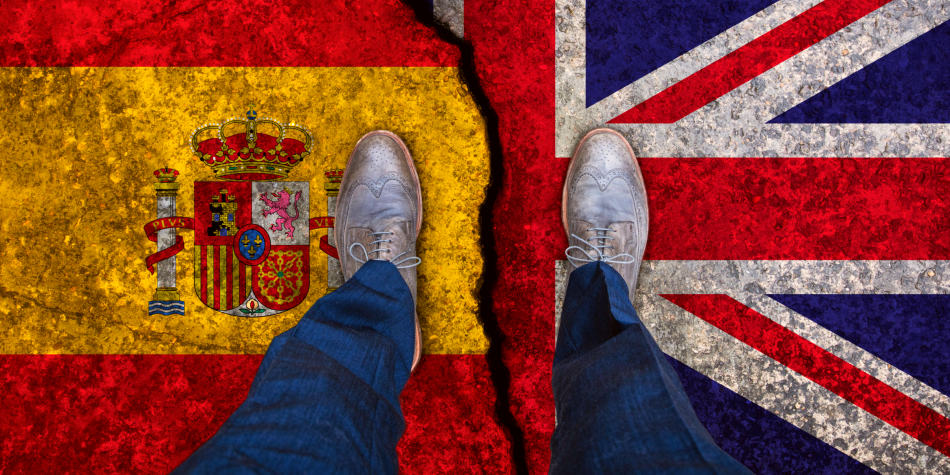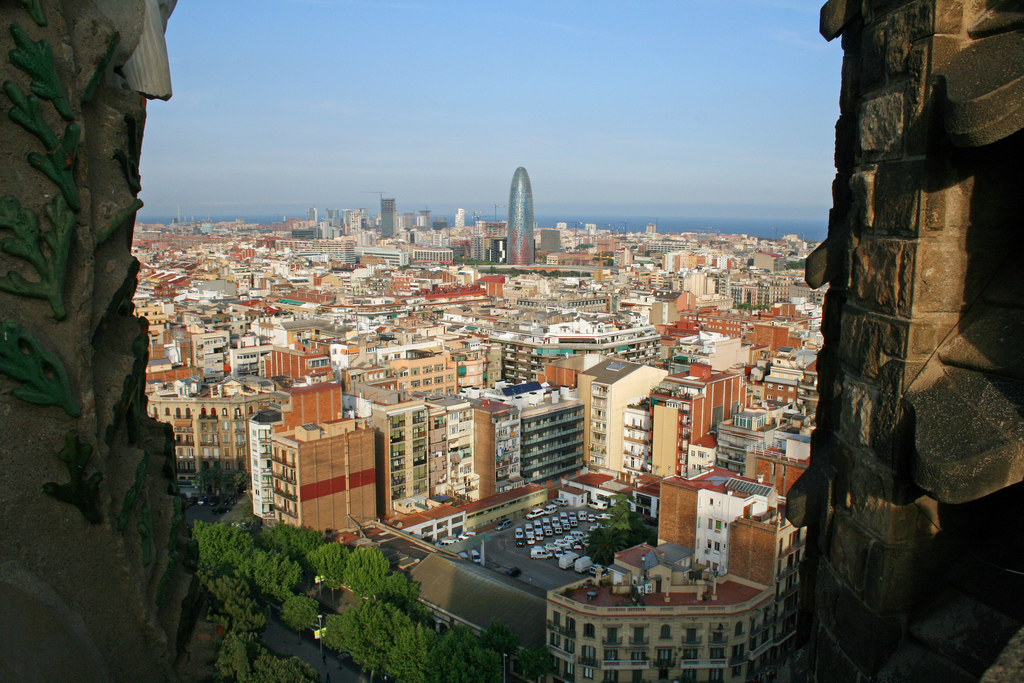All you need to know about the new TIE residency card and what you need to do if you’re moving to Spain before Brexit.
Following the launch of a new residency card in the Spain, the British Ambassador, Hugh Elliott has urged British nationals to apply to ensure that they secure their rights after the transition periods ends in December.
This is particularly important for people in the process of moving to Spain or those who have holiday homes splitting their time between the UK and Spain.
With the new residency card (called the Tarjeta de identidad de extranjero or TIE), comes a new residency status specifically created for British nationals which sits in between what EU entitled to but is much better than the status of non-EU citizens that would apply after the transition period.
 The British Ambassador, HMA Hugh Elliott and members of the Embassy and Consular teams in Spain held a live question and answer session on Facebook to explain the new residency card and the process for applying for it.
The British Ambassador, HMA Hugh Elliott and members of the Embassy and Consular teams in Spain held a live question and answer session on Facebook to explain the new residency card and the process for applying for it.
You can watch the full video on the Brits In Spain Facebook page but we have summarised some of the information below.
Join us for our Live Q&A with HMA Hugh Elliott and Members of our Embassy and Consular teams. We will answer as many of your questions as we can. And, of course, do post your questions on other issues: healthcare, pensions, driving, etc. The session will also be available to watch afterwards.
Posted by Brits in Spain on Wednesday, 8 July 2020
Please note that as this is a new card, processes and details may well change so check with the UK Government Guide – Living In Spain or the Spanish authorities for the latest information and how it applies to your circumstances.
At the beginning of the broadcast Hugh Elliott reassured viewers and emphasised the significance of the new card and what it means to British Nationals living or moving to Spain in the transition period:
“Spain is one of the first countries to introduce this residency document and it’s a sign of how much they recognise the importance of and how much they value the British community and the number of Brits living here in Spain and the importance of making sure that things are properly organised for you.”
Contents
What does the UK Ambassador to Spain say about the new TIE card?
Following the announcement and a rush of questions from British expats, the British Ambassador to Spain, published an update video on Twitter to reassure British Expats living Spain as well as those in the process of moving to Spain.
“We’ve seen lots of questions and concerns on social media, so I want to underline two key points.
First, I want to assure you that all British nationals, who are legally resident in Spain by the end of this year, will have their rights protected, including the right to live and work here, and lifelong access to healthcare for UK state pensioners, including those who claim a pension in the future.
And second, whether you already have the green residency certificate – A4 or credit card-sized version – or in the future the TIE, they are equally valid in demonstrating your residence status and your rights as a beneficiary of the Withdrawal Agreement.
Almost 360,000 British people are already registered here in Spain. And whilst you may choose to exchange your current certificate for a TIE at some point in the future, there is no requirement to do so. The green residency document gives you the same rights as the new TIE card. So please be assured on that point.
There is one group of people who must take action. If you live here, but don’t already have a green residency certificate, you must apply for the new TIE as soon as possible.”
Yesterday the 🇪🇸 Government launched a new residency document for 🇬🇧 nationals protected by the Withdrawal Agreement – the TIE. @HughElliottUK welcomed this and underlined that both the TIE and green residency document are valid in demonstrating residency rights @SEstadoMigr pic.twitter.com/kUehwtBDJR
— BritslivinginSpain (@BritsliveSpain) July 7, 2020
What is the new residency card?
The new card is called the Tarjeta de identidad de extranjero or TIE and anyone registering their residency in Spain will now be issued with this new card rather than the current green paper document.
There is no difference in the rights it endows but it will be a biometric card with photo.
Who should apply for the new residency card?
Technically UK nationals and their family members will not have to apply for a new status as it is defined by the Withdrawal Agreement, however the residency card confirms their status as beneficiaries of the rights contained in the Withdrawal Agreement.
It is a wise precaution therefore for British nationals to apply so that they have evidence in the future that they were resident in Spain before 31st December 2020.
Do you need to apply for the new TIE card if you have already registered for the old green residency document?
The short answer is no. If you have the A4 paper document or a smaller credit card sized certificate, they remain valid as proof of your residency in Spain and also prove your rights of entitlement under the Withdrawal Agreement.
You do now have the option of applying for the new TIE residency document, but there is no obligation for you to do so.
But the British Ambassador recommends that you don’t rush to apply right away as it will block up the system for unregistered people who really need to apply for it.
When should current British nationals resident in Spain or people moving to Spain apply for the TIE card?
If you don’t have the green residency document will need to apply to register with the Spanish authorities and it is highly recommended that if you take action as soon as possible.
It is an obligation for UK nationals living in Spain to register and when you register you will be issued not with the green bit of paper but the TIE.
What if you have not yet moved to Spain or what if your move has been delayed due to Covid-19 and you won’t be arriving until later in the year?
You need to be currently resident and living in Spain to apply for the TIE card.
If you are planning to move to Spain before the end of the transition period, it is recommended that you do so as soon as possible and then apply for the TIE card as soon as you arrive and are resident in Spain.
Although it may take up to 3 months to be processed, your application receipt will prove your residency until you receive your TIE card.
How do you apply for the new TIE card?
The process varies depending on whether you already have the old residency document or if you are registering for the first time.
If you have the old green residency document you can submit your application directly to the police station to ‘upgrade’ to the new TIE residency card.
If you have not applied before or you have newly arrived in Spain then the application process for registering for the new card is different in that it is now a two-step process.
Firstly you submit the documentation to show that you meet the residency requirements. The second step is obtain the physical card itself.
Step 1: Apply for an to the Immigration Office
For new arrivals or applicants you first need to submit your application and documentation to the Spanish Immigration Office. You either do this with an appointment in person or alternatively submit it online.
To apply and submit your documents online you will need to have a digital certificate. Once you have submitted your application and documents you will immediately be issued with a receipt and that will prove your legal residency status in Spain whilst you are waiting for the Immigration Office to come back to you with their final decision.
To apply in person you book your appointment and have the option of going in person with your documents or appointing a representative to go on your behalf.
If you go in person you may get a decision right away, but the Immigration Offcie has said that anyone applying will have a decision within three months.
Step 2: Apply at the police station for your physical TIE card
Once you have received confirmation from the Immigration Office you can book an appointment with police office. This stage has to be done in person and not online.
You take your receipt and supporting documents, pay the fee and the police station will give you your TIE card.
How long does it take to apply for the new card?
The Immigration Office promise to give you a decision within 3 months but it is likely to be much quicker than that.
If you apply for the initial stage online, you will receive a receipt which can act as evidence of your residence until your application is officially approved.
If you book a physical appointment, it is unclear at the moment whether you will receive an immediate decision like in the old system or whether you have to wait for the final decision.
Are there any benefits to the new card over the old green paper document?
In terms of guaranteeing your legal residency status and rights under the Withdrawal Agreement, the answer is no.
However, one advantage is that people may find the card easier and more practical to carry around compared to the paper document. It is also more durable – some of the old paper documents are becoming a little dog-eared from frequent use.
Do you need health cover to apply for residency?
To apply for residency you need to provide prove of health cover. You can access healthcare as a dependent if your spouse is working.
It is important that private healthcare needs to have the same level of cover as the state healthcare. Needs to be fully comprehensive with no exemptions.
You need to have arranged appropriate healthcare cover before you can begin your application for the TIE card.
Do children under the age of 16 need to apply for the TIE card?
It is important that children have their own residency document, so they need to apply for the new TIE card to guarantee their rights and prove their residency.
Children being born after the end of the transition period need to be registered for residency within 3 months of their birth.
What if you split your time between the UK and Spain – for example ‘swallows’ who like to spend the winter in Spain and the summer in the UK?
There are many thousands of Brits who like to divide their time between staying in the UK and Spain.
You need to decide whether you want to be resident in Spain or UK. Spending large periods of time in Spain, but not being a resident may be difficult in the future.
Under current rules non-residents can stay in Spain for up to 90 days in a 180 day period visa free.
Future terms are still under negotiation and may change, but would need a special measure to be agreed with the EU to extend the 90 day period.
Should I apply for Spanish residency if I own a holiday property in Spain?
You can only be resident in either Spain or the UK so you will need to decide which country you want to be formally resident in and be aware of the legal implications.
If you are just using your property as a holiday home and only spending a limited time in Spain, then you will likely be better off just keeping your UK residency.
What is the situation after Brexit for retired people who have property in Spain?
There is no change apart from the length of time that you’ll be allowed to stay in Spain – a maximum of 90 days in any 180 day period.
There is no change to your right to own a property in Spain.
Can I apply for the TIE online?
The first part of the application to submit your documents and prove your right to residency can be completed online.
However, the second part to apply for and collect your physical TIE card needs to done in person.
How long is the TIE card valid for?
The initial TIE card is valid for 5 years. After that period you can apply for the long term TIE which is valid for 10 years and is renewed automatically.
If you have already been living in Spain as a resident, then this time counts towards the 5 years. For example, if you moved to Spain two years ago, only need to wait 3 years to apply for long term TIE card.
How much does the TIE card cost?
This is still to be confirmed but the fee is expected to be up to 22 Euros.
Have the financial requirements for residency changed?
The financial requirements for residency in Spain have not changed. You still need to prove that you have the financial means to support yourself independently e.g. have an income from being employed / self-employed, have a pension or prove you have sufficient funds and assets e.g. savings and own your property.
How can I exchange my UK driving licence for a Spanish one?
You can still apply to exchange your UK driving licence for a Spanish one, however, you need your Spanish residency document before you apply and you must submit your request before 31st December.
It is therefore important that you apply as soon as possible so that you have enough time.
After this time you will need to take a new Spanish driving test.
Can I have dual UK and Spanish nationality?
Dual nationality is technically possible in Spain but is treated differently to the UK.
Legally in Spain they would only recognise your Spanish nationality and you are treated just like any other Spanish citizen. You couldn’t therefore make use of British consular services for example.
Can you lose your residency after an extended period of absence?
Yes, but the exact terms depends on how long you were resident in Spain before you left.
If you were resident in Spain for less than 5 years you are allowed absences for up to 6 months in any one year. In exceptional circumstances you may be allowed to be away for up to 1 year.
If you have been resident in Spain for more than 5 years then you can claim permanent residency rights. In this case you can be absent for up to 5 years, which is very useful if you have children who need to leave to attend university in the UK.
This means you can’t move to Spain for one month and then move back to the UK and expect to retain your rights to Spanish residency.
Is there a danger my rights may change in the future?
Your rights under the Withdrawal Agreement are enshrined in international law so will not change in future, so long as you remain resident in Spain.
The rights of non-resident UK nationals in Spain after the end of the transition period are still being negotiated.
Can I be resident in Spain but pay tax in the UK?
Residency and fiscal (tax) residency are not the same so technically this is possible, but as everyone’s circumstances are different you will need to seek professional advice from a tax adviser.
The UK and Spain do have a bi-lateral tax agreement so it is possible to reclaim overpaid tax if you pay in both countries.
Can you travel freely in the EU with TIE card? Can it be used instead of a passport?
The TIE is not a formal identity or travel document, so you will still need to travel with a passport.
However, it will be very useful at the border when re-entering Spain to prove you are a resident rather than as a visitor.
For example, during the Covid-19 lockdown, some British nationals were not allowed back into Spain as they could not prove that they were resident.
How do I organise the removal and shipping of my household belongings to Spain in the transition period?
At PSS we realise the importance and urgency of people moving to Spain and other European countries in the transition period.
We are therefore giving priority to these moves and our team are on hand to help you every step of the way.
As part of the exclusive EUROMOVERS Group, in addition to the British Association of Removers Overseas Group, we are able to offer you very reasonable rates and a high standard of service.
However, because of the high demand and urgent nature of moves to Spain at this time we recommend you contact us as soon as you can to arrange a home or video survey in preparation for your move.
For more information see our removals to Spain guide.
What about shipping boxes or small / part load removals to Spain?
If you are just sending boxes or suitcases to Spain you can use our box or baggage shipping service.
If you are a small removal with a few items of furniture and boxes then our shared or part load removals service is a very cost effective option.






